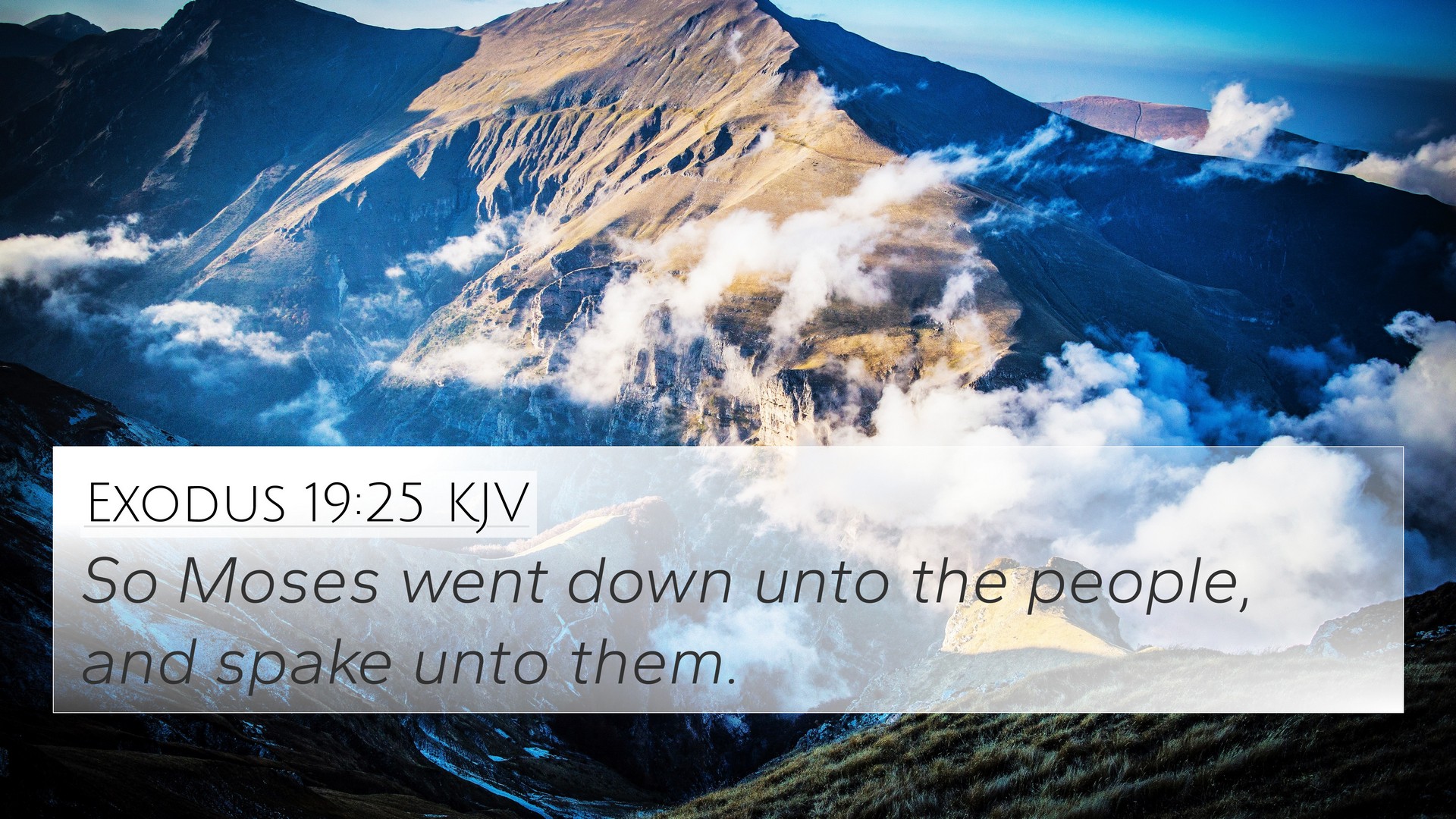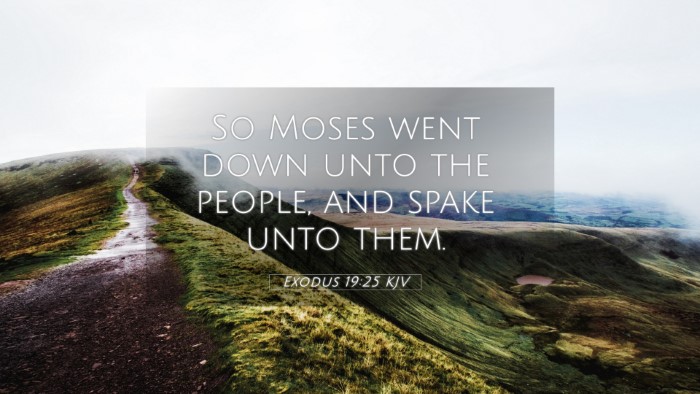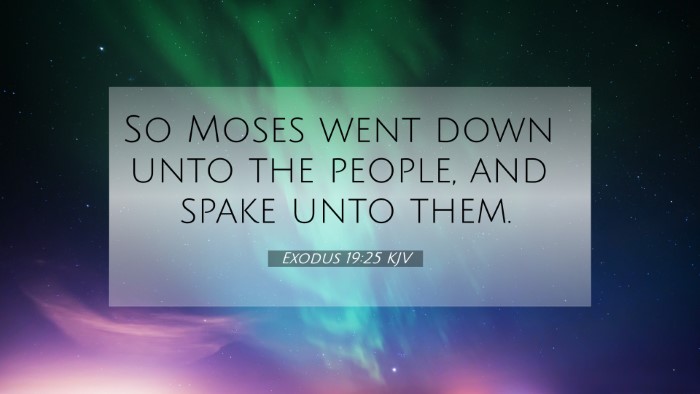Exodus 19:25 reads, "So Moses went down to the people and told them." This pivotal moment marks a significant transition in the narrative of God's covenant with Israel at Mount Sinai. This verse serves as a bridge between divine revelation and human response, outlining the relationship between God and His chosen people.
Summary of Meanings from Public Domain Commentaries
- Matthew Henry's Commentary:
Henry explains this passage within the broader context of God preparing the people for covenantal interaction at Sinai. Moses' descent indicates the mediation between God and Israel, where revelation leads to a response. The emphasis here is on obedience and readiness to receive God's commandments.
- Albert Barnes' Notes:
Barnes highlights the importance of this verse in the context of the Israelites’ anticipation and fear before God's presence. He emphasizes that Moses is both a leader and mediator, bridging the gap between an awe-inspiring God and a vulnerable people. This verse encapsulates the theme of communication between God and Israel.
- Adam Clarke's Commentary:
Clarke compares this moment to other biblical instances where God interacted with humanity. He stresses that Moses' role is pivotal in conveying God's instructions to the people, which later culminates in the giving of the Ten Commandments. Clarke also touches upon the importance of Moses being a faithful servant of God.
Inter-Biblical Dialogue and Cross-References
This verse not only stands alone but also connects with several passages across both the Old and New Testaments:
- Exodus 19:3-4: Precedes Moses' descent, framing the significance of God's message.
- Exodus 20:1: Follows this event where God proclaims the Ten Commandments.
- Deuteronomy 5:5: Emphasizes Moses’ mediatorial role between God and the people.
- Galatians 3:19: Paul's reference to the law being given through angels, reflecting the New Testament understanding of law and covenant.
- Hebrews 12:18-24: Contrasts the Old Covenant at Sinai with the New Covenant in Christ, drawing parallels and connections.
- 1 Timothy 2:5: Speaks of Jesus as our mediator, drawing a direct line of comparison to Moses' role.
- Romans 10:4: Discusses Christ as the end of the law for righteousness, linking the covenant themes initiated in Exodus.
Thematic Connections in the Biblical Texts
This verse exemplifies multiple themes such as mediation, covenant, law, and revelation. It explores the dynamic of divine authority and human responsibility. Here are a few thematic connections drawn from various verses:
- Mediation: Jesus as the ultimate mediator (1 Timothy 2:5) parallels Moses' role (Deuteronomy 5:5).
- Covenant: The establishment of God's covenant (Exodus 19:5-6) foreshadows the new covenant of grace in Christ (Hebrews 8:6).
- Law and Obedience: The giving of the law (Exodus 20) serves as a basis for righteous living highlighted throughout the New Testament.
Conclusion
Exodus 19:25 serves not just as a narrative transition but as a significant focal point from which numerous theological themes and biblical connections emerge. By examining this verse through cross-references, one gains a deeper understanding of the unity and progression of God's plan through Scripture.


